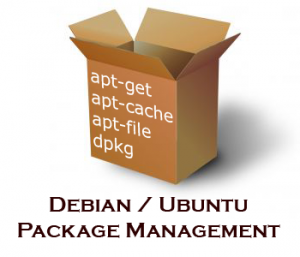The APT development team has released a new version of their tool, Advanced Package Tool 1.0.3.
A few errors are fixed in this release, better support is provided and the CD-ROM mount in all error cases in now undone properly.
For example the FileFd::Size bitswap on big-endian architectures has been fixed, ScreenWidth check in apt.cc is now available, vendors can now install configuration files and vendor information for BlankOn is added.
APT is a set of tools built for the Debian distributions to make installing, removing and updating software comfortable and as easy as possible.
It is very old judging by its initial release date back on 1998, then sixteen years later the developers introduced version 1.0.
Except many new fixes and improvements developers did with the APT 1.0 they also brought innovation to the table by introducing a new apt binary application as a replace for the old one.
What is so special about this new apt binary file? It supports many new commands very useful for the user such as list which is similar to dpkg list and can be used with flags like –installed or –upgradable, search that works like apt-cache search but it sorts the results in an alphabetical order, update which works like the regular update command but produces coloured output, full-upgrade which is a more meaningful name for dist-upgrade and edit-sources that can be used to edit sources.list by using the specified editor.
But why should you use APT?
There are many benefits that come from using the Advanced Package Tool but the key benefit is the the automation of configurations and installations of software packages. The beautiful thing is that when you install software with the help of the apt tool it automatically resolves and install the package dependencies for you.
Probably you have installed .deb packages in your Debian system or debian based linux distribution and you know how time consuming and painful is to install dependencies manually.
For example, if you want to install the Python interactive high-level object-oriented language in your machine the only thing you have to do is to open a new terminal (CTRL+ALT+T in Ubuntu) and run the following command.
sudo apt-get install python
Try the above command and see what is going to happen. In my opinion the best way to learn thing is to practice them as much as possible.
For example, when I run the above command in my Ubuntu 12.04 LTS distribution I get the following output.
sudo apt-get install python Reading package lists... Done Building dependency tree Reading state information... Done python is already the newest version
This happens because python is already installed in my system. Can you guys notice from the above output how the apt tool is building the dependency tree?
It is awesome, isn’t it?
And removing packages is so easy, it is done with the help of only a single command. The command to remove software from your debian based linux distribution is shown below.
sudo apt-get remove package_name
This means that if I want to remove the python package from my Ubuntu box I have to use the following command.
sudo apt-get remove python
The apt tool builds again the dependency tree and asks you before removing all the packages from your system. Here is how it looks like.
The following NEW packages will be installed: liblcms2-2:i386 wine-compholio-i386:i386 0 upgraded, 2 newly installed, 282 to remove and 88 not upgraded. Need to get 27.8 MB of archives. After this operation, 625 MB disk space will be freed. Do you want to continue [Y/n]?
All you have to do is type Y for removing the packages or n for canceling the operation. As you guys can see from these basic examples I shared here, tools do everything for you.





